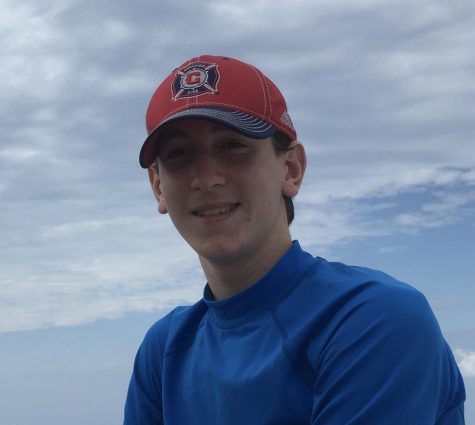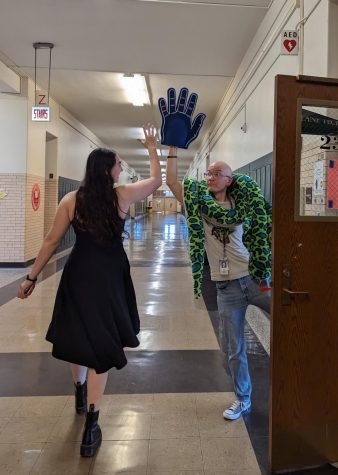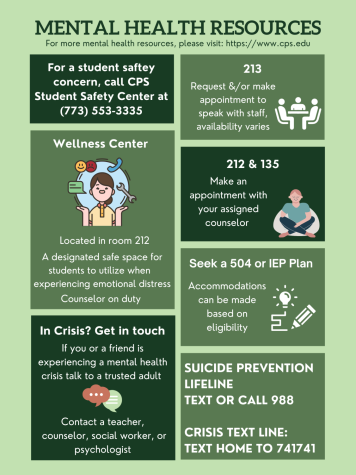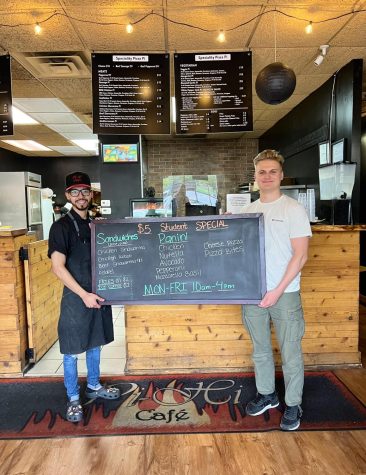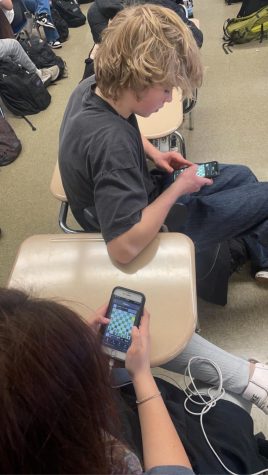Paraprofessionals: Aiding the success of special education
February 20, 2019
During the intense heat of summer or the bitter cold of winter, a group of resilient individuals wait outside Door M, eager for their students to arrive. Accommodating to the needs of several students throughout the day, faculty within the special education cluster program allow for the success of their students, all of whom share a wide range of special needs and limitations that serve only as a small obstacle for achievement.
According to Ms. Mullin, the chair of the cluster program, 18 paraprofessionals work within the department on a daily basis, along with three nurses, a speech pathologist, a physical therapist, an occupational therapist, and a vision teacher.
Mullin enjoys her daily contact with both students and special education faculty.
“The best part of my job is the frequent interactions with the amazing students in our program,” Mullin said.
Mr. Szeszycki has worked as a paraprofessional at Lane since 2015 and said he has already established close relationships with many students within the cluster program.
“I started working the overnight at a group-home while going to college in Indianapolis, which was an around-the-clock facility for adults with developmental disabilities,” Szeszycki said. “Right off the bat, I loved it.”
According to a CPS 2018-19 demographics report, there are approximately 16,947 high school students enrolled in special education across the city. At Lane, 65 students are part of the cluster program.
There is a distinction between a teacher, a paraprofessional and a classroom assistant, according to both Szeszycki and Mullin.
“Teachers run the class, create the assignments and grade the students accordingly,” said Szeszycki, a paraprofessional within the cluster program. “I am there to help that process run a little smoother.”
CPS’ Office of Diverse Learner Supports and Services (ODLSS) “provides the tools and resources to ensure that all diverse learners receive a high quality public education that prepares students for success.”
Using these ideologies as a foundation and guideline for success, the staff within the special education department ensures a quality education for all students, regardless of their disabilities or limitations, according to Szeszycki.
Szeszycki explained that being able to remain calm and flexible in difficult circumstances is crucial to having a good relationship with every student.
“Most of the challenges I deal with are behavioral,” Szeszycki said. “Keeping a calm demeanor when things escalate is tough but critical.”
While Lane’s cluster program creates a welcoming environment for all students, there have been investigations into CPS’ standards within the special education departments across the city over the last two years. While many changes have been implemented, including understaffing and underfunding, problems still exist. In a survey conducted by a disabilities rights activist group in which 800 responses were recorded, underfunding for special needs students, poor communication and ongoing staff shortages continue to create issues across the CPS community.
At Lane, teachers, paraprofessionals and nurses all find joy in their relationships with students.
“I get to work with so many friendly and interesting teachers and students in the special education department,” Szeszycki said.
While each day offers its own unpredictability, staying on one’s feet and preparing for a variety of situations are the key to success, Szeszycki said.
With tasks such as reinforcing the lessons presented by the teacher, helping to supervise students in the classroom and on field trips, going to the gym with them, and also working with the students one-on-one, teaching assistants are pivotal to the success in the classroom.
While special education students were not guaranteed federally funded educational institutions until the passage of the 1973 Rehabilitation Act, the special education program at Lane continues to flourish today, with teachers, paraprofessionals, nurses, aids, and teaching assistants all working in tandem to ensure the success of their students.

